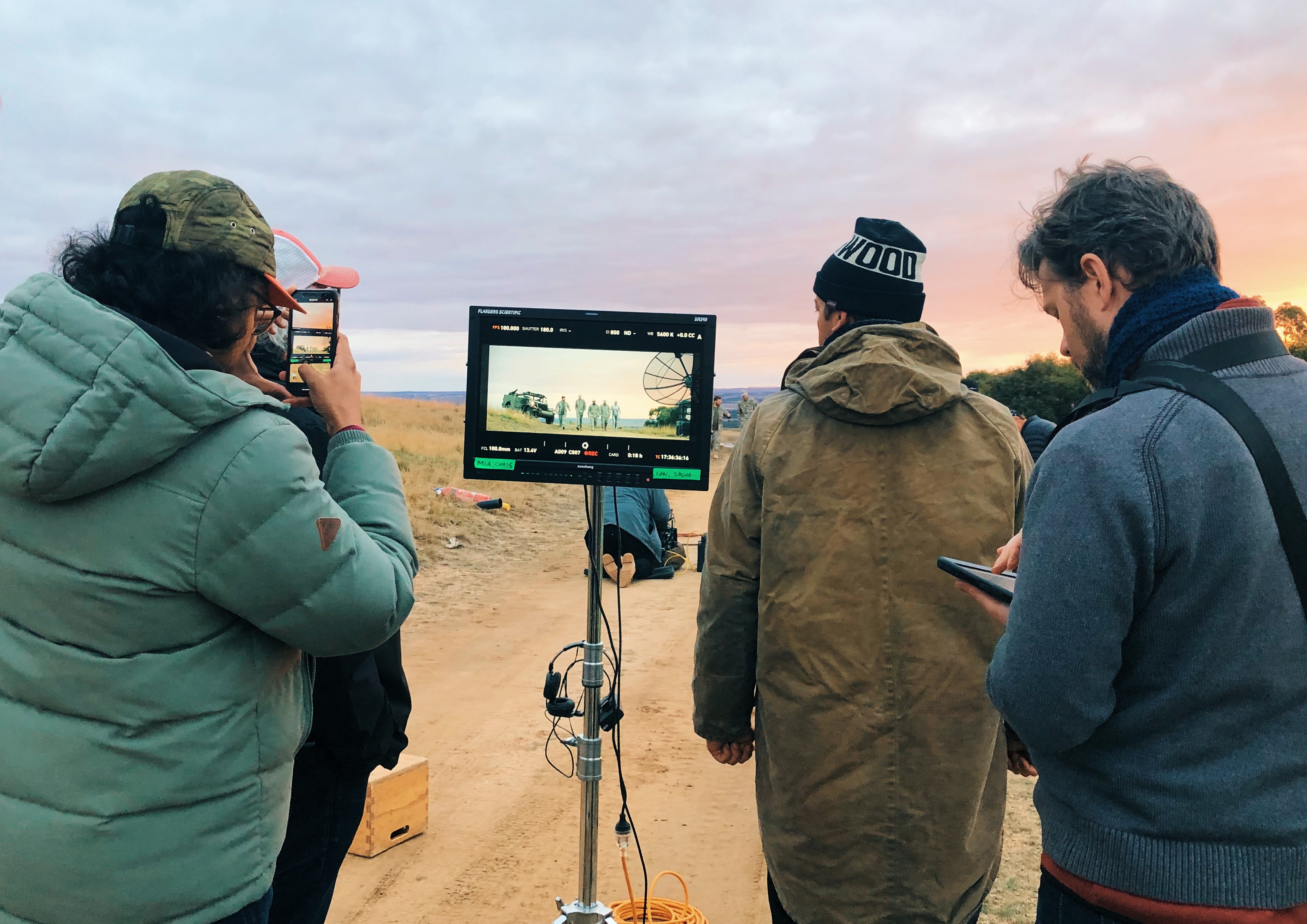Crunch time: Australia's Hollywood boom hoovers up production crews with bottlenecks now biting brands

The local production industry has experienced a flood of international TVC work – and it is now impacting local brands. Pic: Images supplied by Palomina
The Hollywood boom has electrified Australia’s production industry, even before Russell Crowe’s bid to turn Coffs Harbour into ‘Bananawood’. But the influx and resultant glut of work has created a production crunch that is now squeezing brand campaigns and longer form content – and marketers must factor economic reality into their plans.
What you need to know:
- Australia's production industry is booming thanks to covid-safe protocols, which have attracted a flood of international projects, including feature films, TV series, SVOD projects and TV commercials.
- But the boom has driven a dramatic shortage in production crews, and a hike in rates as deals and negotiations go off the table.
- Given the shortage, some crews are opting for longer-term work over shorter-term brand campaigns.
- Brands need to factor supply and demand economics into their timelines and budgets.
While the pandemic hammered much of the film industry, Australian production companies quickly adopted Covid-safe protocols and kept rolling.
Fortress Australia attracted a flood of international feature films, SVOD projects and TV work.
But these hoovered up pretty much all the available production talent and with crews committed to big international projects, local work has suffered. Production companies are seriously stretched, particularly when it comes to production of ads, or TVCs.
They are trying to swallow the costs, but some are losing money on jobs. As a result, many crews are opting to work on longer projects – which has a direct impact on shorter commercial brand campaigns.
Crews are taking on jobs that are longer because they want secure work. As an advertising production company, which does short, sharp contract work, it’s now a struggle to get your top-calibre crew, which are the ones everybody wants.
Crunch time
Anna Fawcett, executive producer, Filmgraphics, said the difficulty securing crews and locations for has hit timelines and rate cards.
“There’s been a huge boom. At times, it is nearly impossible to find crews for commercial TVC production. It takes a few weeks to be able to secure a crew even after production is green-lit.
“We have to deliver once we are awarded a job, and not being able to find crew comes under our responsibility. It means production has to put in more hours to find the crew. On our last job, it took us two weeks to secure a crew – and at the time of bidding for the job, there were no art directors available to even look at the project to help us work out the costs,” said Fawcett.
“There is not enough labour to service the amount of productions we have had.”
As a result, production firms have had to turn down brand work – particularly shorter campaigns – because there aren’t enough experienced people to deliver. That poses problems for marketers conscious of time and budget.
“Crews are taking on jobs that are longer because they want secure work. As an advertising production company, which does short, sharp contract work, it’s now a struggle to get your top-calibre crew, which are the ones everyone wants,” said Kate Merrin, co-founder of Palomina.
With rate cards on the rise and reports that inexperienced crews are charging the same rates as highly trained crews, long-standing deals and negotiations are off the table.
At present, it is the production companies that are feeling the pinch as the margins shrink. One company told Mi-3 that they'd lost money despite being constantly busy with work as each job has a significantly lower margin.
It is only a matter of time before inflated costs hit marketers.
I think we have all weathered the storm well; however, we need to be cautious that this surge in production does not push production pricing up too much ... we could price ourselves out of a future market.
Rate increases
“With the price hikes, everybody gets affected from the production company having to swallow it, if they've already agreed on a certain project fee, right back to the agency and the client, because they have to pay more to get the jobs over the line. They're not going up drastically, but the difference is you cannot negotiate like you used to,” said Merrin.
“The ability for doing any negotiation on rates and deals has become impossible, because people can pick and choose work and timelines; you need time to be able to schedule the job far enough ahead that you can secure the right people. With Covid, timelines are all over the place because jobs can be postponed based on statewide lockdowns. It has posed quite a lot of problems,” she added.
There is a danger that continued rate hikes could put an end to the boom as more international markets open up again.
"I think we have all weathered the storm well; however, we need to be cautious that this surge in production does not push production pricing up too much,” said Michael Ritchie, managing director and executive producer at Revolver.
“Without paying attention to it, we could price ourselves out of a future market as the world comes back online.
“While this is not currently the case, it could be, and it's been a healthy realisation from all aspects of the industry when discussing it.”

